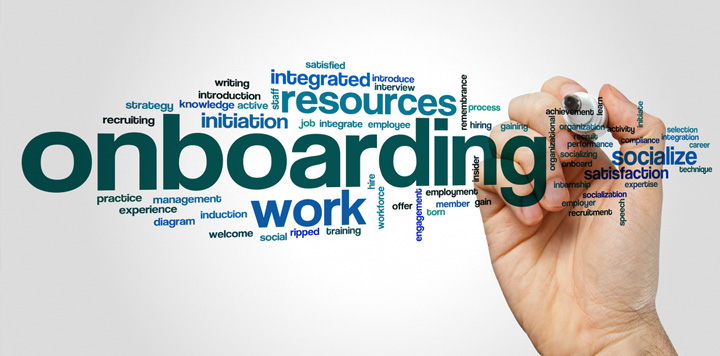Six steps to onboarding customers properly

It is generally agreed that standardization is a major factor in the profitability of a managed service provider (MSP). Recently, we were working on a project where we attempted to define MSP standardization. We definitely over-simplified things, but in terms of standardization, I believe there are three main levels. While this is a very simple way to view standardization, it helps to quickly identify where an MSP is on the maturity scale:
- No Standardization—Individual clients have a variety of hardware and software configurations inside their businesses
- Client Level Standards—Each client has standardized hardware and software within their business
- MSP Level Standards—All clients share a standard hardware and software configuration
One of the most difficult things about standardization is getting people onboarded properly. However, it is also the fastest way to make sure clients get up to the right level of standardization. In this article, we will talk about some of the things you can do to get clients to onboard properly.
What is Onboarding?
 Onboarding is the process that you go through to get a new client into your managed services program. The first step is the initial meeting. This is the meeting that also starts the pattern for all of your future QBR (quarterly business review) meetings with your customers.
Onboarding is the process that you go through to get a new client into your managed services program. The first step is the initial meeting. This is the meeting that also starts the pattern for all of your future QBR (quarterly business review) meetings with your customers.
At the very least, your account manager and your service manager should be in attendance (in some cases, of course, both of those people are you). It is important to have more than one person there from your business to show that supporting this customer is a team effort. If you assign specific techs to clients, I would include that technician as well. Prior to this meeting, you will have already done your site assessments and should be prepared to discuss the onboarding process; the meeting agenda should consist of the following:
- Show them where they stand from the assessments
- Explain what needs to be brought up to your specifications
- Present the quote and timeline for completion
- Agree on an action plan for getting their network up to your specification
Moving Ahead With Your Onboarding Plan
 Once the action plan is approved, you can start moving forward. It is very important to get them to agree to the action plan because it should be defined as project work and therefore not covered under your managed services agreement. At the end of the meeting, setup at least one milestone meeting and a punch list meeting. The milestone meeting should occur 50% of the way through the project or not less than one every two months. The punch list meeting is to finalize the onboarding process and schedule the first QBR meeting.
Once the action plan is approved, you can start moving forward. It is very important to get them to agree to the action plan because it should be defined as project work and therefore not covered under your managed services agreement. At the end of the meeting, setup at least one milestone meeting and a punch list meeting. The milestone meeting should occur 50% of the way through the project or not less than one every two months. The punch list meeting is to finalize the onboarding process and schedule the first QBR meeting.
So what exactly happens during onboarding? Onboarding takes place in six stages:
- Assessment—You have to know what they have
- Evaluation—Compare what they have to where they need to be and create a project list
- Quotation—Quote the projects on your list
- Agreement—Get agreement from the client on the quote and schedule
- Implementation—Get all of your projects done, documenting as you go
- Completion—Punch list meeting and final documentation
The complexity and work that goes into these steps depends on your level of standardization. The most important thing is to make sure you have a process for all six stages that you follow every time to make sure the onboarding is completed. Incomplete onboarding will end up costing you and the client money and time.
Overcoming Objections to Onboarding
 You are almost certain to get some objections to the onboarding process. The most common one is cost. Onboarding is project work because the network is not yet in a state where it can be managed efficiently. The client needs to be made aware that managed services is about managing a complex combination of hardware, software, and personnel. Without standards, processes, and rules, these things simply cannot be managed.
You are almost certain to get some objections to the onboarding process. The most common one is cost. Onboarding is project work because the network is not yet in a state where it can be managed efficiently. The client needs to be made aware that managed services is about managing a complex combination of hardware, software, and personnel. Without standards, processes, and rules, these things simply cannot be managed.
The whole idea behind managed services is decreased problems due to increased efficiency and risk management. Standardization is key to this efficiency part, but it is easier to get the client to buy into the idea of risk management through security. It is easy to draw parallels between risk level and minimum standards. Another way to approach objections is to tell them that until the onboarding process is complete, all work will be done on a time and materials basis. They will understand this now or in three months when they realize they are spending more than what you quoted for managed services to keep their antiquated “pile of spaghetti” running.
The reality is that standardization is a major key to profitability of any MSP. However, no matter what your level of standardization, you need to onboard your clients quickly and effectively to minimize your cost. There is also a hidden “profit” to standardization—regardless of the size of your MSP business, you will have less stress trying to maintain disparate systems for many clients. Create your standards and then your procedures for onboarding and see how much more profitable and less stressful your MSP can be.
Want to stay up to date?
Get the latest MSP tips, tricks, and ideas sent to your inbox each week.
